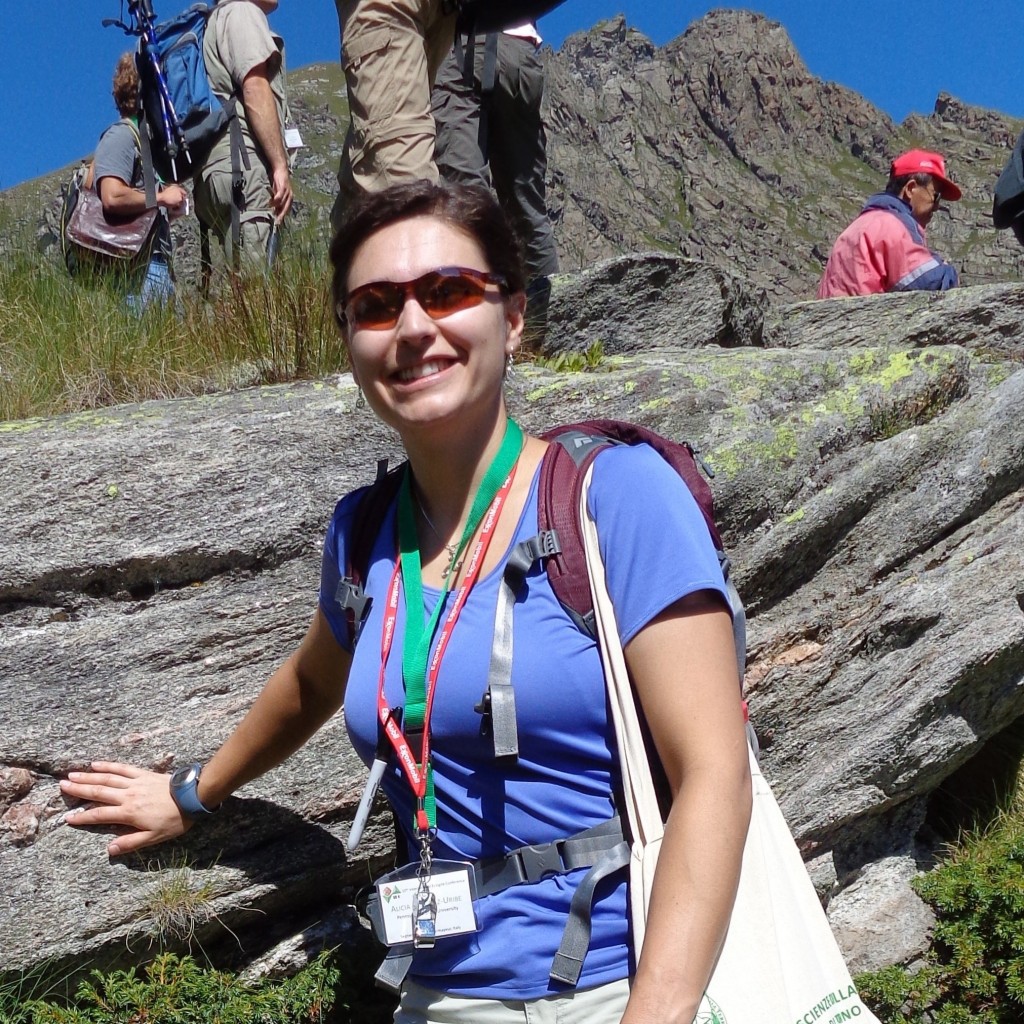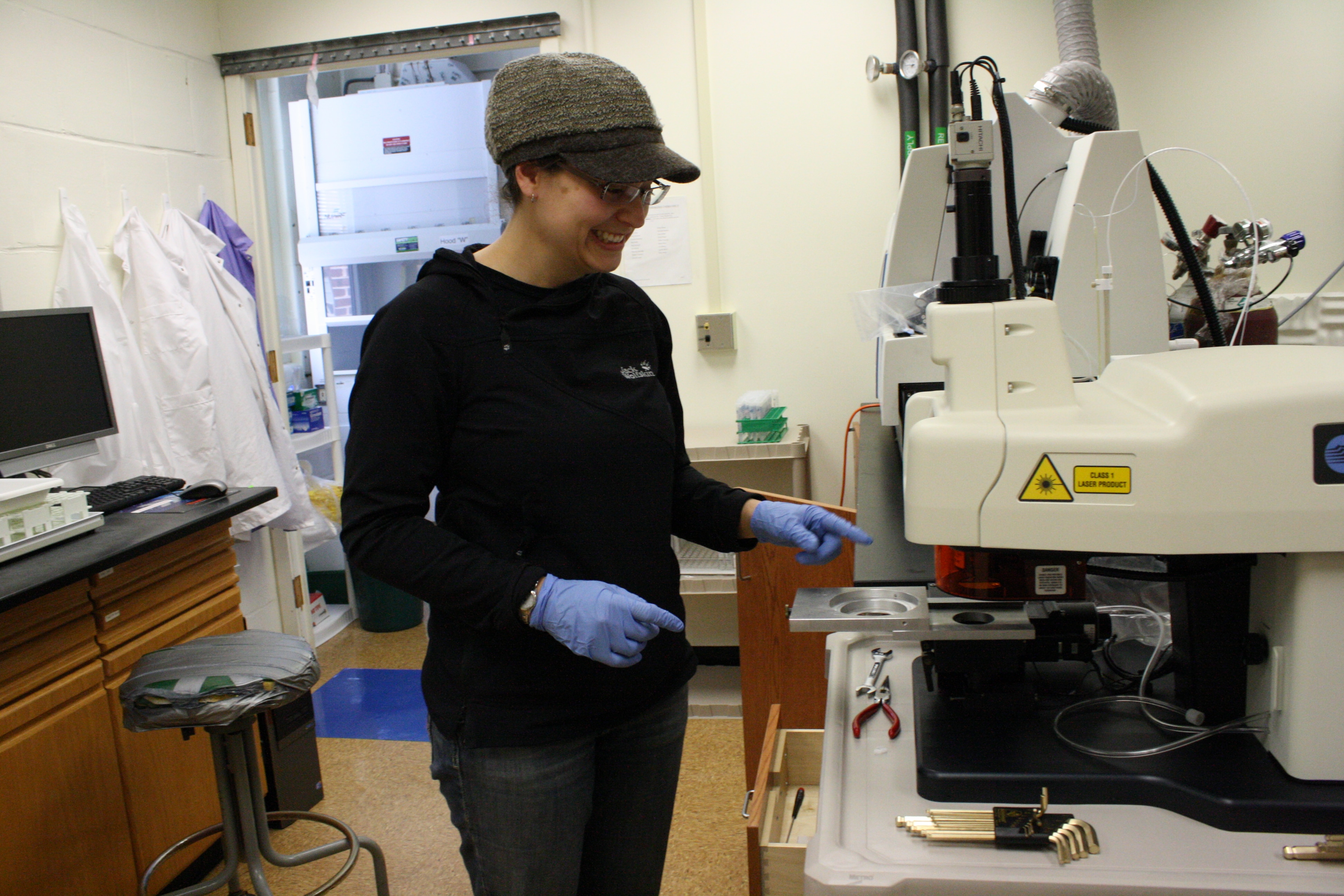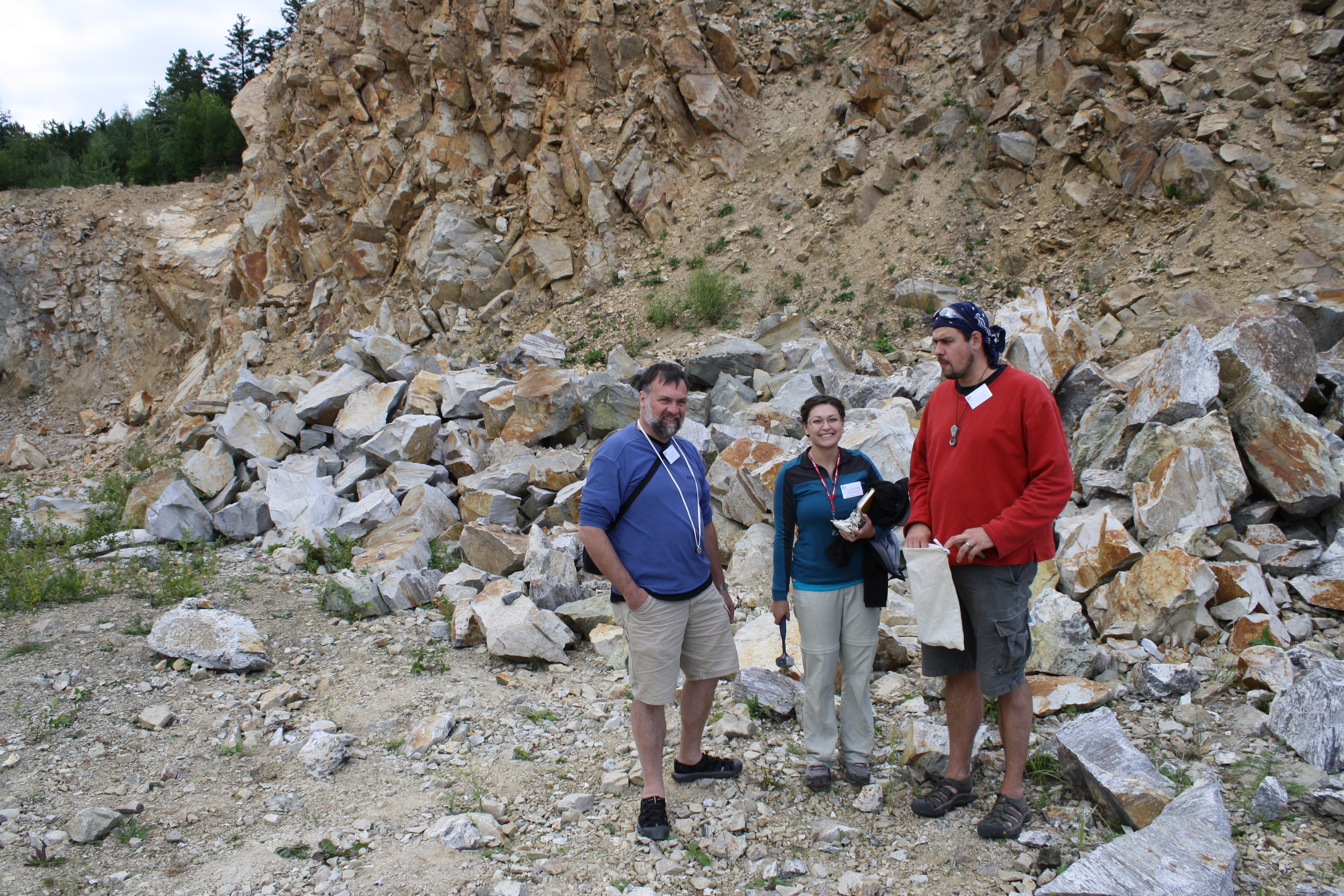Alicia Cruz-Uribe
 Dr. Alicia Cruz-Uribe is starting as the Edward Sturgis Grew Assistant Professor of Petrology and Mineralogy in the School of Earth and Climate Science at the University of Maine in August (congratulations!). She is currently a postdoc at the Woods Hole Oceanographic Institution working in the experimental petrology lab. One of the things she is really interested in is the geochemical connection between the metamorphism that occurs in subducted oceanic crust and the geochemistry of arc volcanoes (i.e., understanding the geochemical fingerprint of subduction).
Dr. Alicia Cruz-Uribe is starting as the Edward Sturgis Grew Assistant Professor of Petrology and Mineralogy in the School of Earth and Climate Science at the University of Maine in August (congratulations!). She is currently a postdoc at the Woods Hole Oceanographic Institution working in the experimental petrology lab. One of the things she is really interested in is the geochemical connection between the metamorphism that occurs in subducted oceanic crust and the geochemistry of arc volcanoes (i.e., understanding the geochemical fingerprint of subduction).
One of the processes that happens during subduction of oceanic crust (+overlying sediments) is the formation of tectonic mélange, which forms during physical and chemical mixing of oceanic crust, sediments, and the mantle wedge. Mélange is potentially very important because it gets trace elements from both the slab and the sediments, which means it has geochemical similarities with the trace element signatures that we find in arc volcanoes. Because mélange materials tend to have a lot of chlorite and other hydrous phases, they are more buoyant than the mantle and can therefore rise into the mantle wedge in specific formations that can dehydrate and/or melt. These fluids and melts help to lower the melting temperature of the mantle itself, which will melt in response. Flux melting of the mantle below arc volcanoes is the prevailing hypothesis for how we create the magmas that are generated in arcs. What is not understood, however, is the extent to which mélange and sediment diapirs, a specific type of intrusion, contribute to this process.
Alicia’s current work focuses on understanding the extent to which mélange diapirs contribute to the formation of arc magmas. Her primary approach to this project is experimental: using a piston cylinder apparatus, she has been melting natural mélange rocks at mantle conditions to simulate the pressures and temperatures experienced by a rising mélange diapir. These experimental melt compositions are then compared to natural volcanic rocks found in arcs around the world. She has found that she can recreate both the major and trace element characteristics of various arc magmas, which suggests that the mélange diapir hypothesis is a viable mechanism for producing some arc magmas.
Alicia joined ESWN in 2009 as a PhD student at Penn State, and she has participated in ESWN get-togethers at a few Goldschmidt meetings. She is currently part of the ESWN Diversity Committee, and she is hoping that her new position at UMaine will allow her to play a more active role in ESWN activities. Alicia has mentored female students both at Penn State and at WHOI, where she currently has a Summer Student Fellow working alongside her and her colleague, Veronique LeRoux. Alicia says, “We are excited to be positive role models for younger female scientists!”

Installing a new sample cell on the laser ablation ICP-MS system at Penn State. Laser ablation (LA)-ICP-MS is one of the techniques I use to analyze trace elements in minerals and glasses.

